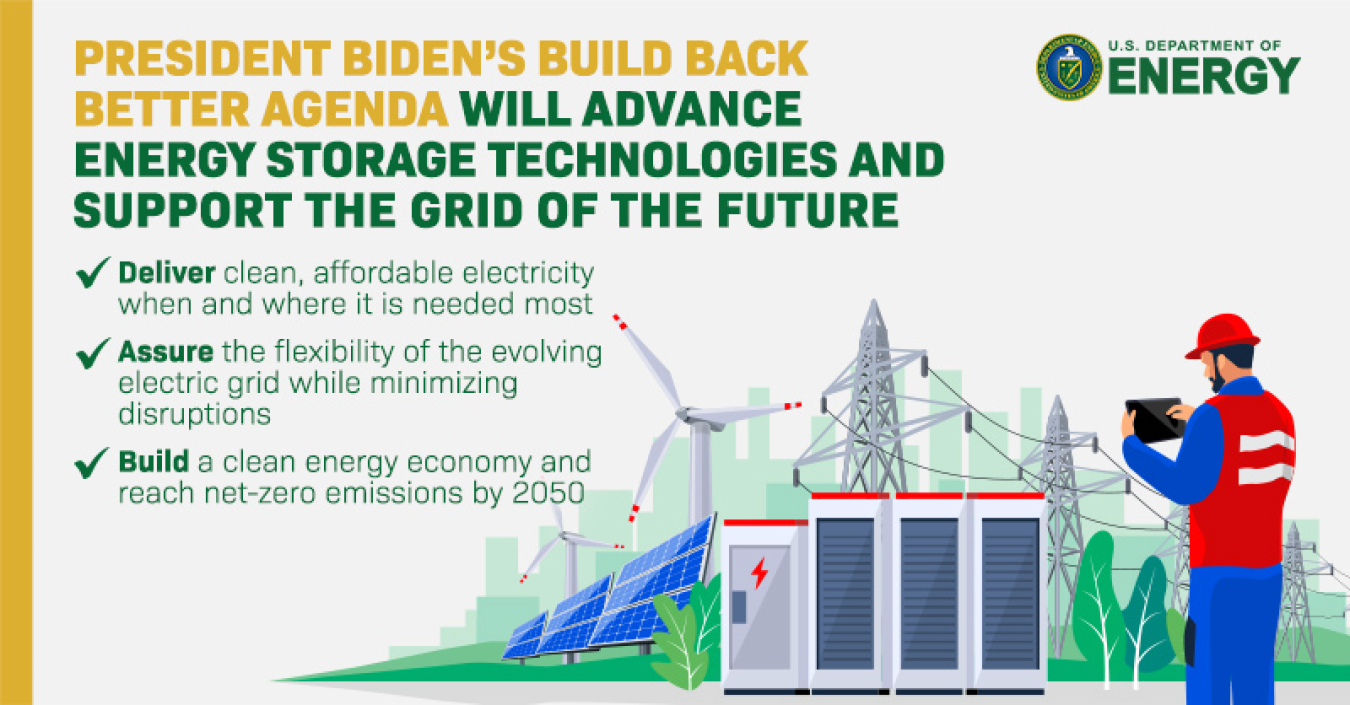
When it comes to solar and wind power, a common question that people ask is, what happens when the wind isn’t blowing and the sun isn’t shining?
The answer is in batteries, and other forms of energy storage.
Demand for power is constantly fluctuating. As a result, it’s not uncommon to have periods of time when conditions for solar and wind energy generation allow us to draw far more power from these natural sources than the grid demands in that moment. But with ample storage, we don’t have to let any of it go to waste. By storing that excess power, we can ensure that our electricity grid can keep up with changing demand, whenever and wherever it arises—and that a cloudy day without much of a breeze doesn’t leave anyone’s home in the dark.
Advancing energy storage is critical to our goals for the clean energy transition. As we add more and more sources of clean energy onto the grid, we can lower the risk of disruptions by boosting capacity in long-duration, grid-scale storage. What’s more, storage is essential to building effective microgrids—which can operate separately from the nation’s larger grids and improve the energy system’s overall resilience—and allows us to create standalone power sources for individual buildings.
That’s why the Department of Energy has been involved in energy storage research and development for decades. Through investments and ongoing initiatives like DOE’s Energy Storage Grand Challenge—which draws on the extensive research capabilities of the DOE National Laboratories, universities, and industry—we have made energy-storage technologies cheaper and more commercial-ready. Thanks in part to our efforts, the cost of a lithium ion battery pack dropped from $900/kWh in 2011 to less than $140/kWh in 2020.
We’re looking to build on that progress in the years ahead.
In March, we announced the first steps towards constructing our $75 million, 85,000 square foot Grid Storage Launchpad (GSL) at the Pacific Northwest National Laboratory (PNNL) in Richland, Washington. Upon completion as early as 2025, pending appropriations, this facility will include 30 research laboratories, some of which will be testing chambers for new grid storage technologies.
With the $119 million investment in grid scale energy storage included in the President’s FY 2022 Budget Request for the Office of Electricity, we’ll work to develop and demonstrate new technologies, while addressing issues around planning, sizing, placement, valuation, and societal and environmental impacts. Our goal is to put America at the forefront of energy storage development and production worldwide.
And with the President Biden’s Build Back Better Agenda, we can deepen our efforts to research, develop, and deploy batteries and grid scale energy storage. The Bipartisan Infrastructure Framework would launch a nationwide effort to upgrade our transmission system, and the forthcoming reconciliation bill will include major investments in a wide range of clean energy technologies.
Through the brilliance of the Department of Energy’s scientists and researchers, and the ingenuity of America’s entrepreneurs, we can break today’s limits around long-duration grid scale energy storage and build the electric grid that will power our clean-energy economy—and accomplish the President’s goal of net-zero emissions by 2050.